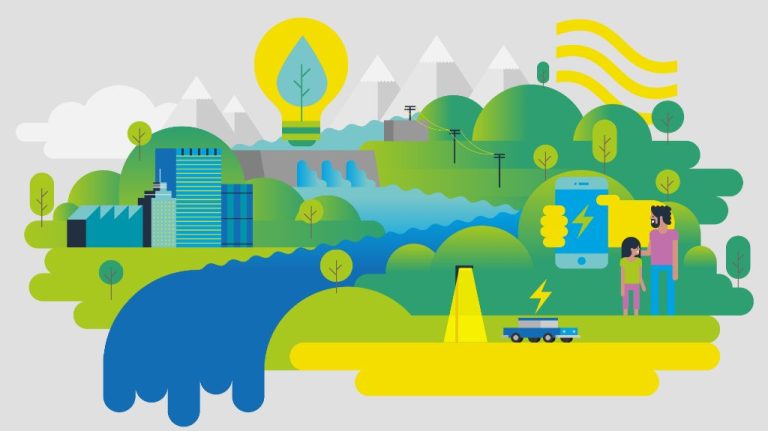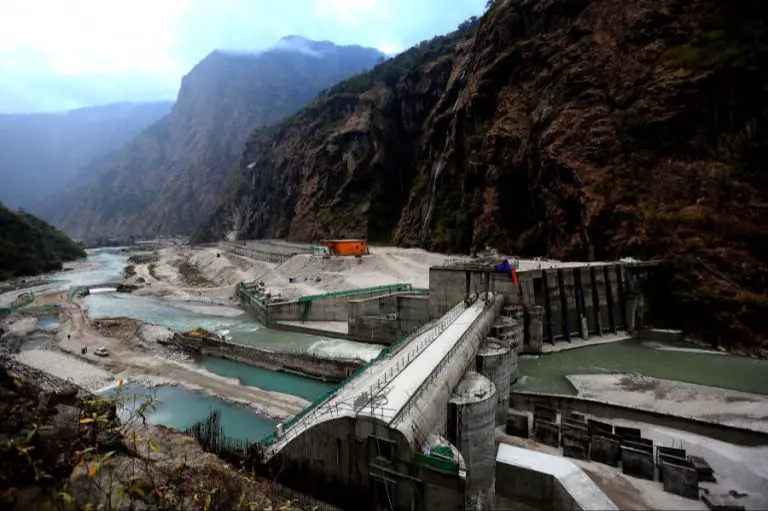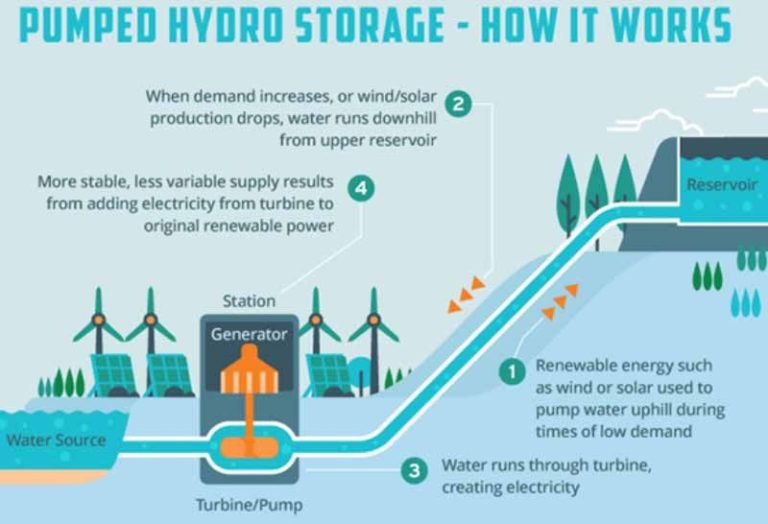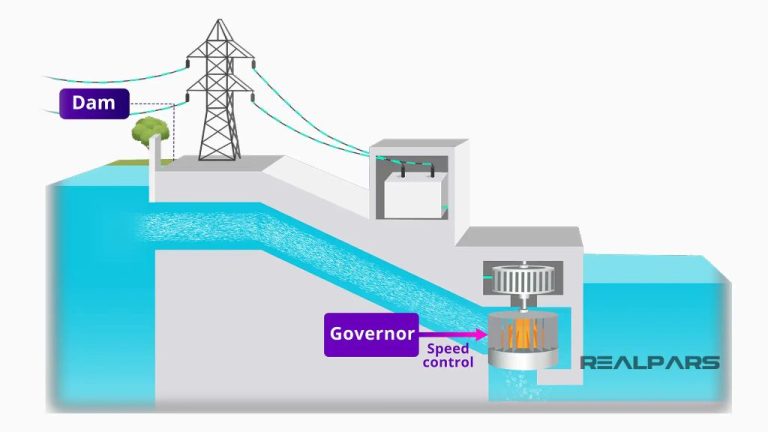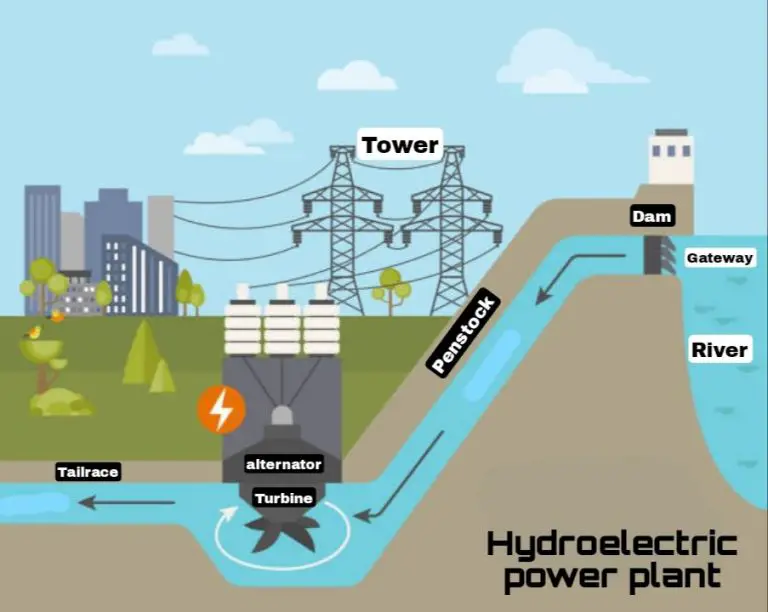What Is Hydropower Maximum Efficiency?
What is Hydropower?
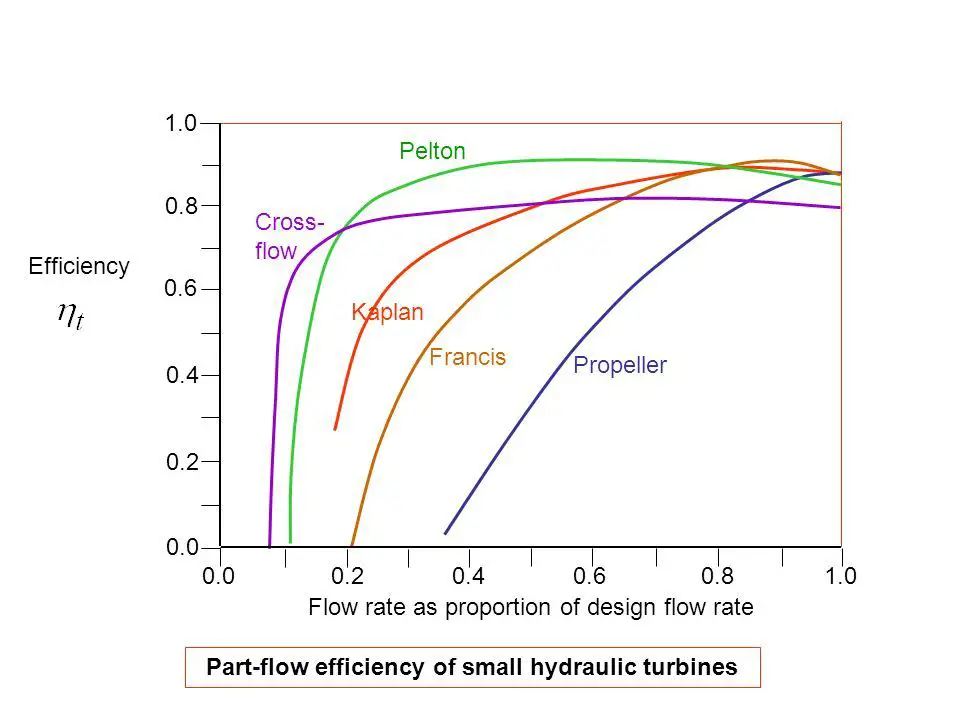
Hydropower, also known as hydroelectric power, refers to the process of generating electricity by harnessing the power of flowing or falling water. It is one of the oldest and most widely used forms of renewable energy. Hydropower works by damming a river or stream to store water in a reservoir. The force of the water flowing through the dam’s tunnels spins turbines, which are connected to generators that produce electricity. The amount of electricity generated depends on the volume and speed of the water flow as well as the size and efficiency of the turbines and generators [1].
Hydropower is considered renewable because it relies on the water cycle, in which water evaporates, forms clouds, precipitates and flows back down to the ocean. This cycle repeats continuously and replenishes the water source. Hydropower is also flexible, as the flow can be controlled through dams to match electricity demands. Overall, hydropower provides a clean, domestic source of electricity that supports energy independence and sustainability.
Hydropower Efficiency Basics
Hydropower efficiency refers to the ratio between the electrical energy output versus the hydraulic energy input of a hydropower plant. It is a measure of how much of the water’s potential energy is converted into electrical energy by the turbine generator system.
According to the laws of thermodynamics, it is impossible to convert 100% of the input energy into useful output energy. There will always be some energy losses, usually in the form of heat, sound and friction, that reduce efficiency.
The theoretical maximum efficiency of a conventional hydropower turbine is around 90-95%, based on the principles of thermodynamics. However, real-world hydropower systems have additional losses that reduce efficiency. The actual operating efficiency of hydropower plants typically ranges from 80-90%.
Some key factors impacting hydropower efficiency include water flow rate, turbine and generator design, piping design, and electricity transmission infrastructure. Ongoing research and technology improvements aim to optimize these factors to increase efficiency as much as possible.
Typical Efficiency Ranges
The typical efficiency range for hydropower systems is between 60-90% according to the U.S. Department of Energy’s U.S. Hydropower Market Report. Efficiency refers to the ratio of electrical energy output versus the available energy in the water. Several factors impact the efficiency of a hydropower system:
- Head height – The height the water falls from the reservoir to the turbines. More head equals more potential energy to convert.
- Turbine and generator efficiency – More advanced turbines and generators convert more of the available energy.
- Pipeline and penstock efficiency – Minimizing friction and turbulence in the pipes and penstocks maximizes usable energy.
- Reservoir management – Storing water at optimal times to align with electricity demand cycles improves efficiency.
Larger hydropower dams with more head height and advanced equipment typically operate at 75-90% efficiency. Smaller, low-head systems are usually 60-80% efficient. Overall, the average efficiency is around 80%. Improving any of the factors above can increase efficiency toward the maximum.
Ideal Maximum Efficiency
The theoretical maximum efficiency for hydro turbines is known as the Betz limit or Betz’s law, developed by German physicist Albert Betz in 1919. The Betz limit states that no turbine can capture more than 59.3% of the kinetic energy in moving water. This means that the maximum possible efficiency for a hydro turbine is 59.3%.
The Betz limit arises from laws of conservation of mass and energy. As water moves through the turbine, the turbine extracts energy, resulting in a pressure drop. But the mass flow rate of the water in must equal the mass flow rate of water out. There is a limit to how much energy can be extracted while still maintaining the required mass flow through the turbine. At the Betz limit, 59.3% of kinetic energy is extracted.
Exceeding the Betz limit would mean taking out so much kinetic energy that the mass flow rate would decrease and the water would divert around the turbine instead of going through it. So 100% efficiency is theoretically impossible for hydro turbines due to physical constraints around conservation of mass and energy.
While the Betz limit sets an upper bound, real-world turbines operate below this maximum efficiency, generally in the range of 30-50% efficiency. But the Betz limit remains an important concept for understanding ideal maximum efficiency.
Improving Hydropower Efficiency
There are several ways to improve the efficiency of hydropower generation, including:
1. Turbine design improvements – Advances in turbine design, such as helical turbines, allow for more power to be generated from the same amount of water flow. Computer modeling and fluid dynamics analysis help optimize turbine shapes for maximum efficiency [1].
2. Preventing water loss – Lining canals and addressing leaks in dams and penstocks prevents water from being lost before it reaches the turbines. This allows more water to be utilized for power generation [2].
3. Electricity transmission improvements – Upgrading generators and electrical components and using higher voltage transmission lines decreases energy losses in transmission. More of the power that’s generated makes it to the end user [2].
Maximizing efficiency at existing hydropower facilities through these types of upgrades allows more renewable energy to be produced from existing infrastructure.
Real-World Examples
Several case studies have analyzed the efficiency of real-world hydropower stations. One study looked at the Longyangxia hydropower station in China’s Yellow River (“Efficiency evaluation of hydropower station operation: A case study of Longyangxia station in the Yellow River, China”). The researchers evaluated the station’s efficiency over a 10-year period and found that it operated with an average efficiency of 81.2%. This is on the higher end of typical efficiency ranges for hydropower. Factors impacting the Longyangxia station’s efficiency included water flow rates and variability, turbine and generator performance, and operations management.
Another case study analyzed the Larona River cascade hydroelectric stations in Georgia (“Performance evaluation of hydropower operation for cascaded hydroelectric power stations: A case study of Larona River cascade hydroelectric power stations”). This cascade system with four power stations achieved an overall efficiency of around 75%. The study found that coordinated operation of the cascade stations could improve overall efficiency compared to isolated operation.
These real-world case studies demonstrate hydropower efficiencies within the typical 70-90% range. Efficiency depends heavily on local conditions like water flow, infrastructure performance, and operations management. Careful design and operations can maximize efficiency at existing hydropower installations.
Economic Considerations
Hydropower is one of the most affordable and cost-effective sources of renewable electricity generation. According to the Institute for Water Resources, hydropower plants have very low operating costs because they do not require fuel. This makes them resilient to fluctuations in fossil fuel prices.
The initial capital costs of building a hydropower plant can be high, but the payback period is relatively short. Most hydropower projects recover their costs in 10-30 years. Upgrades and efficiency improvements also have reasonable payback periods of 5-10 years through increased generation and revenue.
Revenues from hydroelectricity sales depend on factors like electricity prices and incentives for renewable energy. Revenues can be substantial for large hydro facilities, but smaller facilities may struggle to recover costs depending on local electricity rates. Overall hydroelectricity remains one of the lowest cost renewable energy sources.
Environmental Impact
While hydropower can provide clean renewable energy, large hydropower dams and reservoirs can negatively impact the environment if not carefully managed.[1] When land is flooded for a reservoir, it can destroy forests, wildlife habitats, and agricultural lands. Dams also change natural water flows, which can harm native plant and animal species that rely on certain water levels and temperatures.[2]
However, efficiency improvements in hydropower technology can help reduce environmental impacts. More efficient turbines allow projects to generate the same amount of electricity with less water, enabling operators to maintain higher water levels in the reservoir. This minimizes the amount of flooded land and disruption to natural flows. Variable speed generators also provide more flexibility to alter operations based on environmental conditions and needs.
Smaller, “run-of-river” hydropower projects that divert a portion of a river’s flow without a large impoundment have much lower environmental impacts. They can also incorporate systems to allow fish migration past dams. Overall, maximizing efficiency helps make hydropower more sustainable and reduces disruption to sensitive ecosystems and wildlife.[1]
[1] https://www.eia.gov/energyexplained/hydropower/hydropower-and-the-environment.php
[2] https://www.ucsusa.org/resources/environmental-impacts-hydroelectric-power
Latest Technologies
Hydropower technology has rapidly advanced in recent years to boost efficiency. According to the U.S. Department of Energy, the Biden-Harris administration launched a $28 million program in 2022 to support new hydropower deployments, pumped storage projects, and efficiency improvements.
One cutting-edge innovation is utilizing electric trucks for transportable hydropower. As described by AZO Cleantech, electric hydrokinetic trucks can harness energy from flowing water with up to 80% efficiency. This portable solution allows hydropower generation in remote locations without building dams.
Researchers are also developing low-head hydropower converters to extract energy from small elevation changes in waterways. Optimizing turbine designs for low-head applications can open up many new hydropower possibilities with minimal environmental impact.
Advancements in power electronics, materials engineering, and hydrokinetic systems will enable safer, more efficient hydropower production. With sustained investments in R&D, the hydropower industry can continue pioneering innovative technologies well into the future.
Future Outlook
Projections indicate that hydropower efficiency will continue to improve in the coming years and decades. Advances in turbine and generator technologies are expected to increase conversion efficiencies by 1-2 percentage points by 2030.1 New variable-speed turbine designs can better optimize energy capture across a wider range of flow conditions. The DOE Hydropower Vision report projects that continued modernization of existing plants and upgrades to new high-efficiency equipment could boost the average fleet-wide efficiency from 80% to 85% by 2050.1
There is also active research into new hydropower technologies such as hydrokinetic turbines that can generate power from river and tidal currents without dams. These technologies are still in early stages but have potential for further efficiency gains in the future.2 Advanced computer modeling and digital optimization systems are also enabling more efficient control and operation of hydropower assets.
Overall, the outlook is positive for continued incremental efficiency improvements in hydropower generation through evolutionary technological advances and upgraded infrastructure.

